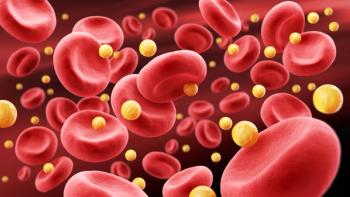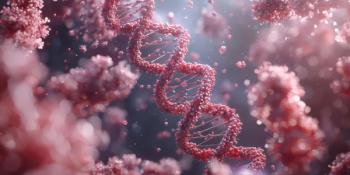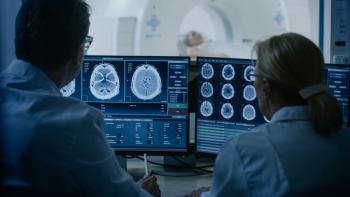
- September 2021
- Volume 87
- Issue 9
ADHD Is Not Likely to Go Away
But the good news is treatments can be tailored for patients with the chronic behavioral condition.
As the most common behavioral condition and the second most common chronic illness in children, attention-deficit/hyperactivity disorder (ADHD) affects approximately 9% of children in the United States.1
Because ADHD is chronic, it usually requires lifelong care and coordination of interventions from education, medical, and mental health providers.
Diagnosis
The Diagnostic and Statistical Manual of Mental Disorders describes ADHD in behavioral terms,2 so clinicians diagnose the condition using a clinical evaluation. No objective tests can confirm the diagnosis. In addition to a comprehensive history and physical examination, clinicians also use parent- or teacher-reported behavior rating scales in children.3 In adults, self-reporting and descriptions of behaviors from family members can help.
Animal models, neuroimaging studies, and pharmacologic studies suggest adrenergic and dopaminergic alterations in ADHD.4,5 Approximately 76% of individuals with ADHD may be genetically predisposed, but investigators have not isolated specific genetic patterns.6 Environmental factors, such as childhood lead exposure, head trauma, maternal alcohol intake or smoking, or prematurity, increase risk.7
Treatment
Behavioral treatment and medication do not cure ADHD but can control symptoms, which include hyperactivity, impulsivity, and inattention. Behavior-modifying interventions, such as parent behavior management training and school behavior management programs, have been shown to help.8 They are considered first-line treatments.
The results of the multisite National Institute of Mental Health’s Multimodal Treatment of ADHD study showed that behavioral interventions and stimulant medication were effective over 14 months with follow-up at 10 years.9 Stimulant medication had the strongest effect on core ADHD symptoms. Families found behavioral interventions most acceptable, but behavioral therapy combined with medication was most effective. This was especially helpful when children had comorbid health concerns or family dysfunction. The investigators had difficulty demonstrating long-term benefits, because families did not necessarily receive the same level of behavioral interventions or medication once they left the active trial.9
Regardless, rigorous studies have consistently confirmed medication’s efficacy and safety when taken in the therapeutic dose range for ADHD.10 Table 111 has clinical tips about FDA-approved nonstimulants and stimulants that can reduce ADHD symptoms and improve functioning in children 6 years or older.
Other interventions, such as cognitive or neuropsychological training interventions, diets, electroencephalographic training, or supplements, lack empiric support.10
Table 212-19 lists common questions and information to help pharmacists with patients who have ADHD.
Conclusion
Pharmacists must manage patients’ expectations about medication and explain that individuals respond differently.
Many prescribers fail to counsel patients with ADHD and their families about drug abuse and diversion, and pharmacists can fill that gap.
Jeannette Y. Wick, MBA, RPh, FASCP, is the assistant director of the Office of Pharmacy Professional Development at the University of Connecticut School of Pharmacy in Storrs.
REFERENCES
- Attention-deficit/hyperactivity disorder. CDC. Updated November 16, 2020. Accessed July 20, 2021. https://www.cdc.gov/ncbddd/adhd/data.html
- Diagnostic and Statistical Manual for Mental Disorders. 5th ed. American Psychiatric Association; 2013.
- Conners CK. A teacher rating scale for use in drug studies with children. Am J Psychiatry. 1969;126(6):884-888. doi:10.1176/ajp.126.6.884
- Solanto MV. Dopamine dysfunction in AD/HD: integrating clinical and basic neuroscience research. Behav Brain Res. 2002;130(1-2):65-71. doi:10.1016/s0166-4328(01)00431-4
- Del Campo N, Chamberlain SR, Sahakian BJ, Robbins TW. The roles of dopamine and noradrenaline in the pathophysiology and treatment of attention-deficit/hyperactivity disorder. Biol Psychiatry. 2011;69(12):e145-e157. doi:10.1016/j.biopsych.2011.02.036
- ADHD collaborative. Cincinnati Children’s Hospital Medical Center. Accessed July 20, 2021. https://www.cincinnatichildrens.org/ research/divisions/a/adhd/ collaborative
- Pingault JB, Viding E, Galéra C, et al. Genetic and environmental influences on the developmental course of attention-deficit/hyperactivity disorder symptoms from childhood to adolescence. JAMA Psychiatry. 2015;72(7):651-658. doi:10.1001/jamapsychiatry.2015.0469
- Evans SW, Langberg JM, Schultz BK, et al. Evaluation of a school-based treatment program for young adolescents with ADHD. J Consult Clin Psychol. 2016;84(1):15-30. doi:10.1037/ccp0000057
- Jensen PS, Hinshaw SP, Swanson JM, et al. Findings from the NIMH Multimodal Treatment Study of ADHD (MTA): implications and applications for primary care providers. J Dev Behav Pediatr. 2001;22(1):60-73. doi:10.1097/00004703-200102000-00008
- Kemper AR, Maslow GR, Hill S, et al. Attention deficit hyperactivity disorder: diagnosis and treatment in children and adolescents. AHRQ Comparative Effectiveness Reviews, No. 203; 2018.
- Canadian ADHD practice guidelines, 4.1. Canadian ADHD Resource Alliance. Accessed July 20, 2021. https://www.caddra.ca/wp-content/uploads/Canadian-ADHD-Practice-Guidelines-4.1-January-6-2021.pdf
- Maguire C. Is it possible to outgrow A.D.H.D.? The New York Times. November 13, 2020. Accessed July 20, 2021.
https://www.nytimes.com/2020/11/13/well/family/is-it-possible-to-outgrow-adhd.html?searchResultPosition=1 - Moss CM, Metzger KB, Carey ME, Blum NJ, Curry AE, Power TJ. Chronic care for attention-deficit/hyperactivity disorder: clinical management from childhood through adolescence. J Dev Behav Pediatr. 2020;41(suppl 2S):S99-S104. doi:10.1097/DBP.0000000000000772
- Bussing R, Mason DM, Bell L, Porter P, Garvan C. Adolescent outcomes of childhood attention-deficit/hyperactivity disorder in a diverse community sample. J Am Acad Child Adolesc Psychiatry. 2010;49(6):595-605. doi:10.1016/j.jaac.2010.03.006
- Kuriyan AB, Pelham WE Jr, Molina BSG, et al. Young adult educational and vocational outcomes of children diagnosed with ADHD. J Abnorm Child Psychol. 2013;41(1):27-41. doi:10.1007/s10802-012-9658-z
- FDA permits marketing of first medical device for treatment of ADHD. News release. FDA; April 19, 2019. Accessed July 20, 2021.
https://www.fda.gov/news-events/press-announcements/fda-permits-marketing-first-medical-device-treatment-adhd - Park G. FDA-approved gaming is already here, pointing to its therapeutic potential. The Washington Post. March 16, 2021. Accessed August 10, 2021.
https://www.washingtonpost.com/video-games/2021/03/16/fda-video-game/ - Morgan PL, Hillemeier MM, Farkas G, Maczuga S. Racial/ethnic disparities in ADHD diagnosis by kindergarten entry. J Child Psychol Psychiatry. 2014;55(8):905-913. doi:10.1111/jcpp.12204
- Sibonney C. Black women with ADHD start healing, with a diagnosis at last. The Washington Post. July 17, 2021. Accessed August 10, 2021.
https://www.washingtonpost.com/health/black-women-bias-adhd-diagnosis/2021/07/16/1784cda2-df22-11eb-9f54-7eee10b5fcd2_story.html
Articles in this issue
about 4 years ago
Case Studies: September 2021about 4 years ago
OTC Case Studies: Diabetesabout 4 years ago
September 2021 Pet Peevesabout 4 years ago
Help Ensure Proper Medication Storage and Disposalabout 4 years ago
Call the Shots on Travel Vaccinesabout 4 years ago
September 2021 Rx Product Newsabout 4 years ago
Innovative Technology Helps Manage Chronic Conditionsabout 4 years ago
September 2021 OTC Product Newsabout 4 years ago
Research Third-Party Logistics Providers BeforehandNewsletter
Stay informed on drug updates, treatment guidelines, and pharmacy practice trends—subscribe to Pharmacy Times for weekly clinical insights.


















































































































































































































